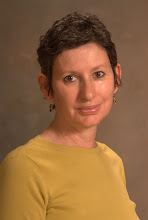Younger women. Thinner women. Asian women. Females who fall into these categories are more likely than other women to have dense breasts, which simply means that they lack fat in this part of their bodies. Unfortunately, mammograms miss nearly 50 percent of breast cancers in these women.*
I'm the poster child for this. I had a palpable growth in my breast that was simply not visible on my mammogram. In an especially absurd juxtaposition, I received a letter stating that my mammogram was negative in the same week that I received a lab report confirming that I had breast cancer. The letter saying my mammogram was clear might have more accurately reflected my situation by saying "due to dense tissue, unable to read." Instead, because doctors can't point to an actual problem, the medical community labels these results as "negative," which has the effect of giving women a false sense of comfort.
Patient information is seriously lacking here. Unless you know to ask the question, doctors never tell you that you have dense breasts, or that mammograms might not be effective. I first heard this term applied to me while I was having a breast biopsy and the radiologist casually remarked that she was having trouble injecting the pain reliever because I was "a young woman who still had very dense breasts." Over time, I came to understand just how significant this was.
Some women who are vaguely aware that traditional x-ray mammograms can miss breast cancers have told me that they put their trust in digital mammography, reasoning that it's more accurate than the older method. While this may be true, my breast cancer was still not detectable with the most state-of-the-art digital mammography available.
Ultrasounds do reveal tumors that mammograms don't show and are routinely used when doctors suspect that a patient's mammogram has failed to detect a problem. However, ultrasounds involve a technician moving a wand over a specific area. While an excellent tool for further investigation, ultrasound technology is not efficient enough to use as a broad cancer screening tool in the way that mammography is used. Similarly, MRIs will also reveal tumors in dense tissue, except MRIs are prohibitively expensive, and, except in high-risk women, it's doubtful that insurance will cover an MRI.
But a solution is on the horizon. Clinical trials are underway to test a new screening method called SonoCine, which is a computerized process that takes an ultrasound of the entire breast. SoneCine is available now in Southern California through the Hill Breast Center in Pasadena. (http://www.sonocine.com/) Researchers are finding that they are detecting some breast cancers using SonoCine, which were missed with mammography. According to its website, SonoCine is not a replacement for mammograms or doctor visits and is not for everyone. However, women with the density issue appear to benefit. SonoCine does not yet have FDA approval, but it looks to be a valuable screening tool that could save lives. Women who qualify can join this clinical trial now.
Chemo Update: I'm doing fairly well, as I round out the first cycle. My energy is coming back, just in time for next Wednesday, when they hit me with the second round. While I'm not looking forward to this, the sooner I get the drugs, the sooner I'll be done. So bring it on.
*according to www.sonocine.com
2/8/08
Subscribe to:
Post Comments (Atom)





No comments:
Post a Comment